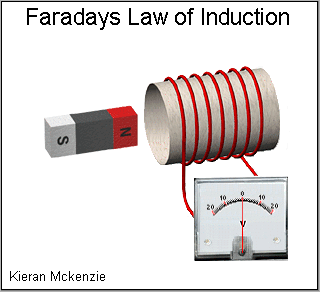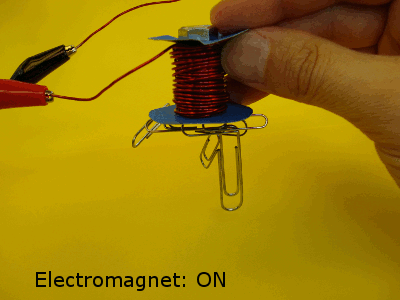Understanding an AC generator | Revealing the underlying concept of power generation.
Good day everyone!
In my last post in #Steemits, I will talk more on open source contributions for utopian. Today, I want to share to you on how electricity is being produce in an AC generator. As an electrical engineer, I believe it is my responsibility to inform others how electricity is being produce; and, why we should not waste it.

At the end of our discussion, you will be able to:
- explain the basic operating principles of an AC generator;
- identify the primary components of an AC generator; and,
- explain the electricity generation in an AC generator.
Introduction
Every industry, offices, and households, in a global scale, uses electricity to operate. We need electricity as much as we need water. We use light bulbs to illuminate our roads. We need to charge are mobile phones and gadget in order to operate. Everything of our daily routine needs electricity.
Understanding how it is being produced could help as avoid wasting it. Generation of electrical power is not as simple as flipping a switch to light bulbs. It covers a rigorous process of changing other forms of energy into electrical energy. So, we begin with our discussion by defining what is an electrical generator.
What is an AC generator?
It is an electrical machine that convert mechanical energy (rotating of a prime mover) to electrical energy. For example, we can harness the energy of a waterfalls by putting a turbine attached to an ac generator.
Basic Principles of AC Generation
In an AC generator, electricity is produce by using the concept of Faraday’s Law of electromagnetic induction which states that:
A moving a conductor in a changing magnetic field (dynamically induced voltage). For example, moving a magnet on a coil of wire attached to a galvanometer. You can expect a movement of the galvanometer dial as you move the magnet in an out the coil of wire.

(image source: 3.bp.blogspot.com)A stationary conductor exposed on a time varying magnetic field (statically induced voltage). For example, when you connect an energize wire (current is flowing through the wire), the nail becomes a magnet hence it is exposed to a changing magnetic field produce by the wound energize wire.

(image source: www.kjmagnetics.com)
Parts of an AC generator
An AC generator has two major parts namely the stator and rotor. Before we go through our discussion, let us first define the terms "Field" and "Armature" in the context of electrical machinery.
When you say field, it talks about the part of the generator where the magnetic flux or field is being induced. So, generally, it is responsible of creating the initial magnetic flux on generator. In AC generator, the field is the represented by the rotor's winding. However, in DC generator, the field is the stationary part.
The term armature refers to teh part of the generator that is responsible of inducing or producing the voltage and current. In AC generator, it is located at the stator. Thus, calling AC generators as stationary armature generator. However in DC generator, it is in the rotor.
Now, lets talk about the stator.

Stator winding is responsible for inducing the voltage and current to the loads (bulb, appliances, etc.). It is also called armature winding. It consist of coil of magnetic wires either connected in wave (parallel) or lap(series) connection.
Stator core is where the armature winding is wound. It is made up of laminated sheets of metallic alloys. It is laminated to reduce ** hysteresis** (magnetic loss) and eddy current (circulating current due to statically induced voltage and current in the stator core). Eddy current is one of the cause of heating of generators. It is innate to material an cannot be eliminate but can be reduce.
Stator frame. It protects the winding damage from external cause. It houses the stator winding and the rotor.
Rotor components

Rotor winding is responsible of initiating the initial magnetic flux/ magnetism in the generator. Without the rotor's induced magnetism, the generator cannot induced any current and voltage. Mostly, rotor winding is connected to an exciter such as a battery. The role of the exciter is to pump or supply an initial current enough to create a magnetism in the rotor.
Rotor core is the same construction as the stator core. It is laminated to reduced both hysteresis and eddy current.
Slip ring is the a point of connection where you can connect the exciter (external battery) to the rotor via a brush.

Carbon Brushes is a contact used to connect the exciter to the rotor winding. It is connected via the slip ring. Brushes of an AC generator is always in pairs and equal to the number of magnetic poles in the generator.
Generator Operation
The AC generator as I have discuss earlier operates in the principles of electromagnetic induction. The rotor is shaft is attached to a prime mover (for example diesel engine). As the diesel engine starts, the rotor rotates the same with the speed of the prime mover. Since the rotor is connected to an exciter (battery), the rotor winding induces a magnetic field. This magnetic field exposes the stationary armature at the stator. Hence it is rotating, the stator winding experiences a variation of magnetic flux over a period of time as it cuts trough it conductor. Thus, inducing the voltage and current.--electricity.
you can watch a video this video to understand more about AC generator.
Closing Remarks
Thank you for reading this article. I hope it helps you understand AC generators. Stay tune for more related articles.
Don't forget to follow, resteem and upvote this post.
@juecoree
[a steemit original]
(all pictures except for those images with indicated sources is taken from my phone, @juecoree | video credit: creative learning )
References:
Cool post!
Thanks for taking the time to put that together. I'm a hobby radio/tv repair man so I love reading about anything electrical. I hope to convert my car to electric some time in the future.
Love your work!
Appreciated. Converting your car to electric , it would be great @khufu . You can follow me @juecoree. I would be posting more on electrical.
You got a 0.45% upvote from @postpromoter courtesy of @juecoree! Want to promote your posts too? Check out the Steem Bot Tracker website for more info. If you would like to support development of @postpromoter and the bot tracker please vote for @yabapmatt for witness!
This post doesn't quite meet qualifications for being curated by steemstem but it is a good post. Before you ask, there is no requirement fee to becoming a person curated by steemstem, just write any STEM related post and we will reward you, assuming you have the minimum requirements (such as citing sources, credit images, and continue with this quality).Check out the steemstem guidelines for curation: Steemstem Helpful Guidelines and Being A Steemstem Member
We thank @nitesh9 and @rocking-dave for the creation and rights to use the steemSTEM images and gifs presented throughout this post
@kryzsec thanks. I'll make sure next time it meets the qualification